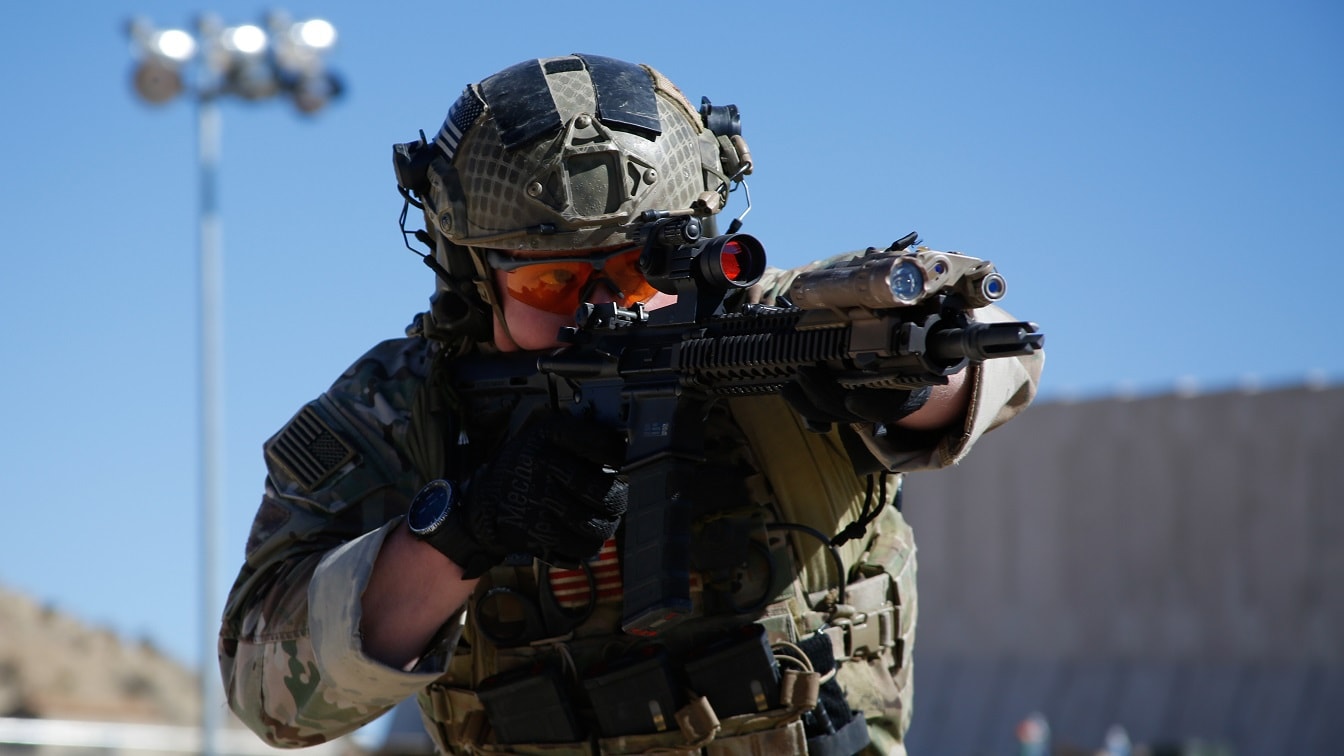In October, news reports highlighted the presence of US special operators in Taiwan, training their local counterparts on the skills necessary to fend off a Chinese invasion.
But this is nothing new. Indeed, US special-operations units have been working in scores of countries for decades, teaching local units how to become better fighters and win conflicts.
This military diplomacy strengthens US presence worldwide and creates valuable alliances and partnerships that can be leveraged in a time of need.
The roughly 70,000 members and supporting troops attached to US Special Operations Command and its more secretive subunit Joint Special Operations Command have global responsibilities and can conduct a wide range of mission sets.
An Army Ranger platoon may conduct a direct-action operation to take down an Al Qaeda target in Iraq. A Marine Raider team may do a strategic-reconnaissance mission to observe an Al Shabaab outpost in Kenya and gather intelligence. Army Green Berets may conduct an unconventional-warfare operation by linking up with local guerrillas to take on Taliban fighters.
But one of the least known but most promising mission sets in the US Special Operations Command’s arsenal is foreign internal defense.
Teaching others how to fight
The Department of Defense defines foreign internal defense as civilian and military agencies of one government participating in any “action programs taken by another government or other designated organization to free and protect its society from subversion, lawlessness, and insurgency.”
“Foreign internal defense is one of the important tools in our toolbox, and that is why we place so much focus on it,” a Green Beret assigned to a National Guard unit told Insider.
When conducting foreign internal defense, special operators link up with foreign military forces and train them, the idea being that it’s easier and a better use of resources to teach a foreign force to fight for itself.
“There is a specific reason why the Q course leans heavily on the foreign internal defense skill set,” the Green Beret added, referring to the Special Forces Qualification Course.
“On top of the tactical component, we learn how to transmit knowledge very well. This is where the cultural and linguist training” that Green Berets receive “really shines,” the Green Beret said. “I may think I am the best SUT [small-unit tactics] instructor out there, but if I can’t transmit that knowledge succinctly and effectively, then I am no real instructor.”
When US trainers speak the language and know the customs of the host-nation force, “then it is way easier to bond with him and make him understand what you are teaching,” the Green Beret added.
With the instruction provided through foreign internal defense, US special operators can reduce or eliminate the assistance partner forces would need in the event of a conflict.
That instruction can range from basic small-unit tactics to advanced close-quarters battle, among many other skills, “but the goal is always to enable [host nation] forces to conduct their own unilateral operations. If we don’t have that end-goal in mind, then we will be there forever,” said the National Guard Green Beret.
Building long-term relationships
Foreign internal defense is also about building long-term relationships with foreign militaries or even specific units.
“FID can establish and refine capabilities. It is a very diverse mission set that can address different needs and truly be a force-multiplier. In many ways, FID is the first line of defense,” a former Army Special Forces officer told Insider.
“FID also has an interesting evolutionary aspect,” the former officer said. “We can go in a country and establish a special-operations or conventional unit and go back there a few years later and train them up on a specific insertion capability,” such as combat diving or free-fall parachuting.
“In a lot of ways, FID never ends, and we often end up building successful longterm partnerships with some units,” said the former officer, who like the National Guard Green Beret was not authorized to speak to the press. “But we get something out of it too. Years or decades after, when we revisit X country, they are now experienced, and they get to teach us stuff too. FID can be a mutually beneficial arrangement that increases our experience and combat effectiveness in the long-term.”
Although foreign internal defense is a specialty of Army Green Berets, the intense operational demand created by the global war on terror forced other units — which were competing for deployment opportunities and funding — to put more emphasis on that mission set.
Even the most elite special-mission units, such as Delta Force and the unit formerly known as SEAL Team 6, have had to do foreign internal defense on occasion as a way to get missions.
Stavros Atlamazoglou is a defense journalist specializing in special operations, a Hellenic Army veteran (national service with the 575th Marine Battalion and Army HQ), and a Johns Hopkins University graduate. This first appeared in Insider.

